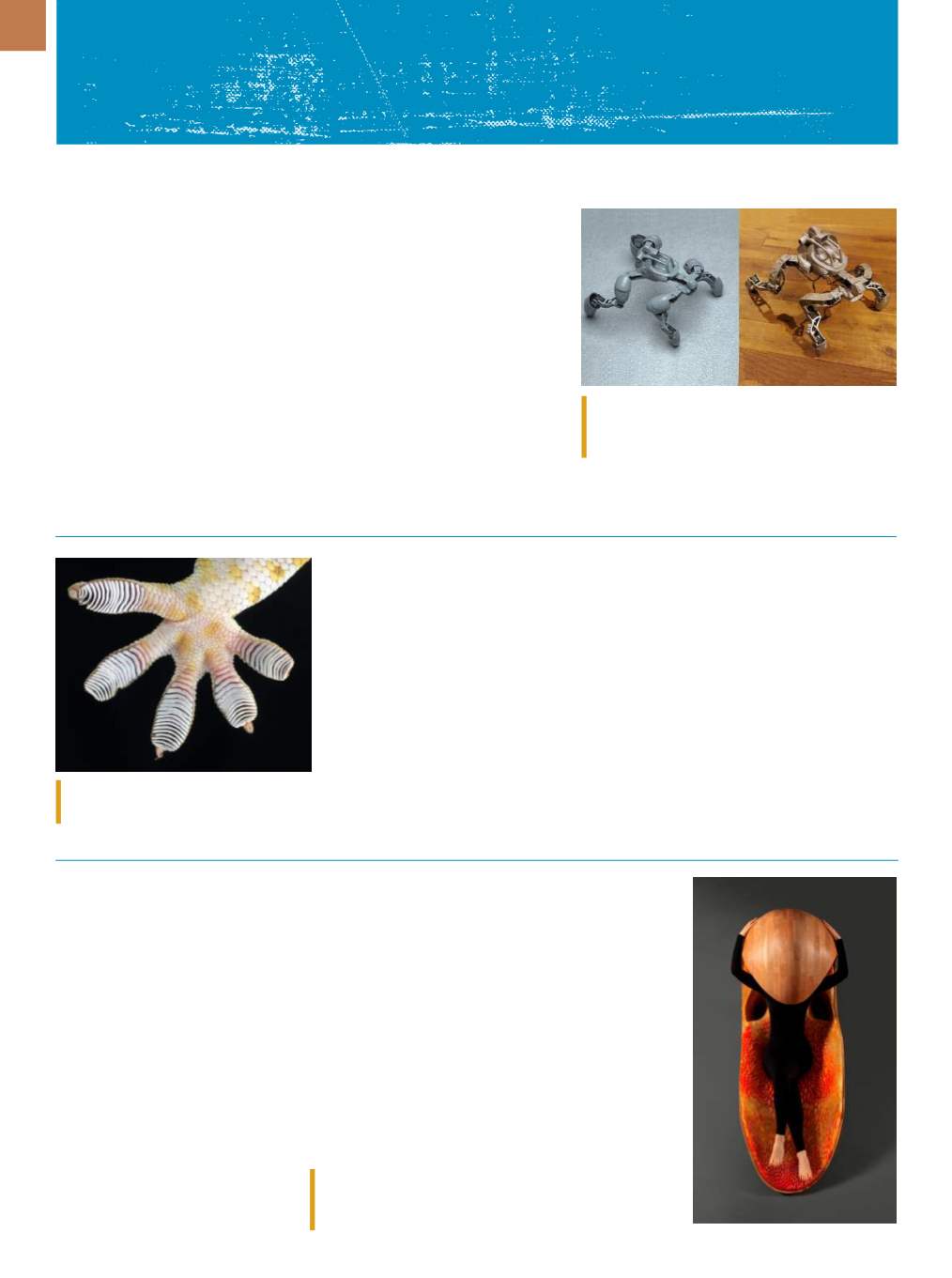

6 2
STRESS RELIEF
PRINTME AROBOT
Even a novice can design and build a customized walking robot using a 3D
printer and off-the-shelf servo motors with the help of a new design tool devel-
oped by Disney Research and Carnegie Mellon University, Pittsburgh. Users can
specify the shape, size, and number of legs for the robotic creature, using intu-
itive editing tools to interactively explore design alternatives. The system also
ensures that the resulting design is capable of moving as desired and not falling
down; it even enables the user to alter the creature’s gait as desired. The design
interface features two viewports—one that enables editing of the robot’s struc-
ture and motion and a second that displays how those changes would likely al-
ter the robot’s behavior. Users can load an initial, skeletal description of the ro-
bot and the system creates an initial geometry and places a motor at each joint
position. Users can then edit the robot’s structure, adding or removing motors,
or adjusting their position and orientation.
cmu.edu, disneyresearch.com.
3D PRINTINGMODERNART
Stratasys Ltd., Minneapolis, announced that the San Francisco Museum of Modern Art has
acquired the much-acclaimed “Gemini” chaise designed by Professor Neri Oxman for its perma-
nent collection. Gemini is a semi-enclosed, stimulation-free environment designed to enhance
vocal vibrations, which are thought to be healing, throughout the body. A biologically inspired,
3D-printed skin lines the beautiful wooden chassis.
The chaise includes 44 different material properties in varying shades of yellows and
oranges with differing transparencies and rigidities, all produced simultaneously in a single print
process. The materials, shapes, and surfaces of the 3D-printed skin enable a unique vibrational
acoustic effect for a quiet, calming environment. According to Naomi Kaempfer, creative direc-
tor of art fashion design at Stratasys, the trend for museums adopting 3D-printed design affirms
the longevity of 3D printing as an artistic medium and reflects a wider movement of artists cele-
brating the unique capabilities made possible with this technology.
stratasys.com.
GECKO-INSPIRED LINGERIE
Kellie K Apparel has a mission to reinvent the strapless bra. The new lingerie is the
brainchild of Anthony Roy, a robotics engineer from California Institute of Technology,
Pasadena. Roy designed the bra for his girlfriend (now wife) using his engineering and
robotics background.
He first developed a prototype using GeckTeck, a biocompatible, silicone-based
material that achieves superior frictional adhesion using the same physical properties
geckos use to cling to almost any surface. The material is designed so that it makes
intimate contact with even the most sensitive skin without irritation. Such close con-
tact creates an intermolecular attraction known as Van Der Waals forces that, on a
micro level, keeps the lining close to the skin while still being comfortable to wear.
kelliekapparel.com.
Detail photo of the foot of a gecko used
for research at the University of Akron.
Digital designs for robotic creatures are shown on the
left and physical prototypes produced via 3D printing
on the right.
Gemini acoustic chaise features an inner lining made of 44
composite materials using Stratasys’ unique color, multima-
terial 3D printing technology. Courtesy of Michel Figuet.
A D V A N C E D M A T E R I A L S & P R O C E S S E S | O C T O B E R 2 0 1 6
















